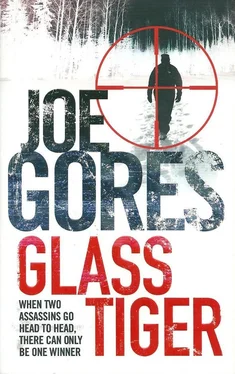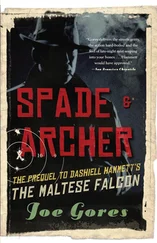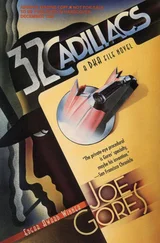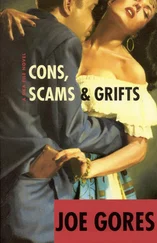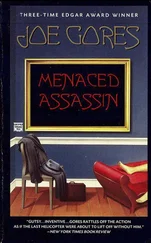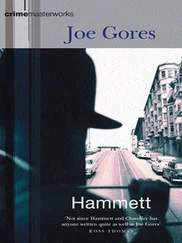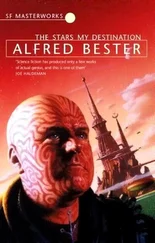During the next six hours, having found the evidence of Corwin’s stalker, Thorne found five different places where a professional shooter had fired at targets of opportunity: rock outcroppings that would scar easily, so the bullet-strikes could be checked out with binoculars. Trees where the pale flesh of the trunk would show the bark had been blown away by direct hits.
Shots taken at ranges of 750 to 1,000 yards, from elevation wherever possible, in every sort of terrain. Hellish long shots that few shooters could make. Oh, misses, too, but shockingly few in relation to the rounds fired. Sniper rounds, high velocity, heavy weight. Sent on their way by a wonderful rifle shot, they would dissolve a man’s head like a dropped watermelon.
He had learned what he had come to learn. Time to head back to his Crown Vic. Down here in the lowlands, the light was fading. Then he realized he was staring at the eight-foot stump of a dead oak hollowed out by the years. Around it the grass had sprung up so vigorously that it was already chest-high.
With two broken-off branches angling out at shoulder-height, it evoked a man giving a speech at a podium. At chest-level it was riddled and ripped by Corwin’s high-velocity rounds.
Here, now, at the end of this day, Thorne knew with certainty what he had only intuited before: Corwin would go for an open-country stalk, not a city stalk, and would try to make a long-range kill from an elevated position. Which narrowed down the sort of presidential stop Thorne had to look for.
Thorne had been stopped by this realization a scant two yards away from the bullet-blasted oak stump, one foot raised for the next step, just as he had stood at Bwana Kifaru’s flank, unnoticed. And at that same moment, he had the overwhelming feeling of being observed. He tensed. Could Corwin possibly have been tracking him all day? Could the man be that good?
Then a big brown blunt-nosed woodchuck came thrusting up out of the opening at the top of the stump. Not Corwin, just the woodchuck, somehow sensing his presence and being made uneasy by it. He chuckled and deliberately shook himself like a dog coming from water. Her worst fears confirmed, the woodchuck scrabbled back down into her hollow stump as if pursued by a lynx.
Thorne thought, with not unjustified pride, that the years of training, the years of Morengaru’s coaching, had not been wasted. All in one day, he had walked up unnoticed on a woodpecker, a rabbit, and a groundhog. His skills were intact. Now he was eager to get back to his motel and check out the president’s trip against what he had learned this day. He knew how: next, he had to figure out where Corwin would strike.
An hour after the tracker had gone, Corwin stirred. It was darkening rapidly now: dusk in another thirty minutes. His various wounds ached. His own fault. He had been following the tracker too closely, too interested in seeing the terrain and his own shooting areas through another man’s eyes, in knowing what the tracker was finding out. He had gotten careless.
He’d just had time to drop silently into the high grass on the far side of the woodchuck’s tree stump and huddle there, motionless, barely breathing, seeking a state of non-existence so the sense of threat would pass. Even so, it was the woodchuck who saved him from discovery. Luckily, the FBI tracker had thought his feelings of being observed had come from her, not a man, and had left without checking behind the stump.
His off-hand challenge with the hot coffee pot had not been such a clever idea after all, Corwin realized. He had been hard-pressed to keep tabs on his pursuer unseen during the long afternoon stalk. And this was his home territory. The man had even picked up on the site from which Corwin had been ambushed.
How had the FBI come up with such a person, almost a shadow figure of Corwin himself? He was a new, disturbing factor in the equation. That he had even thought to check out the cabin and surrounding area meant that time was running out for Corwin.
He almost surely had confirmed for himself that Corwin had been shot from ambush. Probably now was coming to believe that Mather had done it, maybe even that Corwin had been justified in going after Mather.
All of that was irrelevant. What was relevant was that the tracker almost surely now knew how Corwin planned to make his assassination attempt: a long range sniper shot, from elevation. Also, he had almost surely figured out that Corwin would do it sometime in the next ten days, during the presidential barn-storming tour.
The one thing he didn’t know, couldn’t know, was where Corwin would make the attempt. That was Corwin’s edge. Corwin decided to retrieve Janet’s 4-Runner from its hiding place, and tonight drive west non-stop to the Bitterroot Wilderness Area on the Montana-Idaho border. This would buy him the time he needed to establish his base of operations and study the terrain and conditions and find his one perfect place of ambush.
He felt a surge of his old confidence. When he found the right spot, he would know. And when the right moment came, he would take his shot. One shot was all he would need.
He was that good.
Thorne spent the night in the Bide-A-Wee in Portage, working his computer for the president’s trip. Too charged to sleep, he left before dawn to drive back down to the Twin Cities. He now knew when, where, and how Corwin would try to kill the president. But he would have to convince all the president’s men that he was right on all counts, because Hatfield would be out to discredit him in subtle ways. Hatfield needed Thorne’s input, but wanted him far away when Corwin was taken down.
Thorne’s Northwest flight from Minneapolis to D.C. was at nine the next morning, so he had time for one final information probe he didn’t want Hatfield to know anything about. If he got a lead the Feebs hadn’t gotten, he could keep it to himself by seeming to do the plodding, the predictable.
Minneapolis/St.Paul International was near the Minnesota River and Fort Snelling, a few miles west and south of downtown. He checked into an airport motel nearby that had frequent shuttle-service to Northwest departures.
He left the Crown Vic in the parking garage under the downtown FBI Field Office, rode the elevator up, went through the security checkpoint, and turned the keys over to the Agent in Charge. He was a stern-faced dark-haired man named Breen who resembled the late Robert Ryan in one of his tough-guy roles.
‘You could keep it, drop it at the airport in the morning.’
‘I want to stroll around town this afternoon. It’s easier to just catch a shuttle to Northwest tomorrow a.m. But thanks.’
The SAC obviously had been briefed. He dropped any pretense of being helpful. ‘Knock yourself out, Thorne.’
When Thorne was on the elevator down, Ray Franklin, whom Thorne knew only by name, not by sight, came out of the field agents’ bullpen where he had been skulking.
‘I’ll get the GPS transmitter off the car.’
‘You want us to put a tag on him?’ asked the AIC.
Franklin knew Hatfield wouldn’t want anyone in Minneapolis in the loop. He just shook his head.
‘Who’s he gonna talk to, what’s he gonna learn during an afternoon in Minneapolis, that we don’t already know?’
Thorne rode inter-city buses out to the old rambling house on Marshall Avenue in St. Paul where Corwin and Terry had lived and Nisa had grown up. The FBI file said that Corwin had deeded it to Nisa when he had gone off to become a hermit. Her best friend, Jewel Bemel, and her husband, Nate, a clinical psychiatrist, had bought the house from the estate.
Thorne didn’t know what — if any — of Nisa’s papers the Feebs might have left behind. But he hoped they might have missed, or considered unimportant, something that might give him a clue, however slight, as to whether Mather had shot Corwin. Or maybe the Bemels themselves might have some ideas. It was better than spending the afternoon at a movie.
Читать дальше
